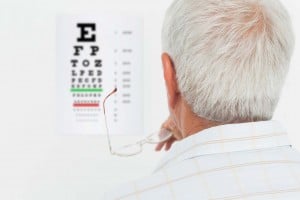Aging brings a whole new set of challenges. As we age, our health tends to decline. We can experience hearing loss, muscle weakness, decrease in mobility, and vision loss. Vision loss among the elderly can be a major healthcare concern, but it can also be just another sign of aging. Approximately 1 in 3 individuals age 65 or older experiences some form of vision loss. One of the leading causes of vision loss among seniors is age-related macular degeneration (AMD).
The good news is that seniors can take precautionary measures to reduce the risk of developing AMD. In this post, we will explore the basics of macular degeneration and offer strategies to help prevent it.
Understanding Age-Related Macular Degeneration
Age-related macular degeneration is caused by the deterioration of the macula, or central portion of the retina. This is the inside back layer of the eye that records the images we see and sends them via the optic nerve from the eye to the brain. It is also responsible for focusing central vision in the eye, and it controls our ability to read, drive a car, recognize faces or colors, and see objects in fine detail.
There are two main types of AMD: wet and dry.
Wet AMD
Wet AMD is more severe; however, it is more treatable. Wet AMD occurs in about 1 in 10 cases and is more likely to cause sever visual loss over a short amount of time. It is caused when something triggers new blood vessels to develop from the choroid. Currently, the trigger is not known. It may be a result of the eye’s ability to try and regenerate itself by stimulating new blood vessels to grow in an attempt to clear waste in our eyes.
Dry AMD
Dry AMD is the most common form and occurs in 9 in 10 cases. It is characterized by yellow deposits in the macula. As these distortions grow, they can cause significant visual distortion. Dry AMD is caused by our failure to take in enough nutrients. Typically, dry MD is a very gradual process as the number of cells affected increases and grows over time. It usually takes several years for vision to become seriously affected. Many people with dry AMD do not totally lose their vision but instead have blind spots.
Symptoms
Symptoms of AMD, both wet and dry, may include:
- Wavy vision
- Blurred vision
- Difficulty making out details
- Dark areas of vision
- Changed color perception
Some AMD sufferers report more serious symptoms like hallucinations. You should pay close attention to any visual distortion because wet AMD does not cause pain, which is much easier symptom to notice.
Reducing the Risk of AMD
Seniors in their 60s and 70s are at the highest risk of developing AMD. It is still unclear if AMD is genetic; however, it has been observed to run in families. Because there is a chance that AMD may be passed through first-degree relatives, you should know your family history of AMD and tell your eye doctor. Additionally, you should get routine eye exams to help diagnose any issues in the eye and to check for AMD.
As previously mentioned, dry AMD can be a result of not getting enough nutrients. Therefore, it's important for seniors to avoid diets high in fat or cholesterol along with high glycemic index foods. Stable blood sugar levels help maintain eye health.
Other risk factors for AMD include:
- Smoking
- Obesity
- High blood pressure
- Prolonged sun exposure
- Eye color
- Inactivity
The best way to help prevent AMD is for individuals to maintain a healthy weight and diet throughout their lives. Get plenty of exercise, attend eye doctor visits regularly, and wear protective sunglasses outdoors that block UV and blue light.
Treatment for AMD
Unfortunately, there is not yet a cure for AMD. However, there are treatments that can slow the progression of vision deterioration. A physician may prescribe medicines or supplements that may halt or delay the progression of vision loss. An individual with AMD might also be a good candidate for other treatments like, retinal translocation, submacular surgery, or laser treatment.
If you are diagnosed with AMD, know that the level of progression varies based on the individual. It could remain stable for years. However it's important to develop a plan with your eye doctor. It's best to see your doctor as soon as possible because vision loss caused by AMD cannot normally be reversed.
Seniors with vision loss may benefit from home care services. Reach out to your local Caring office to find out how we can help.


